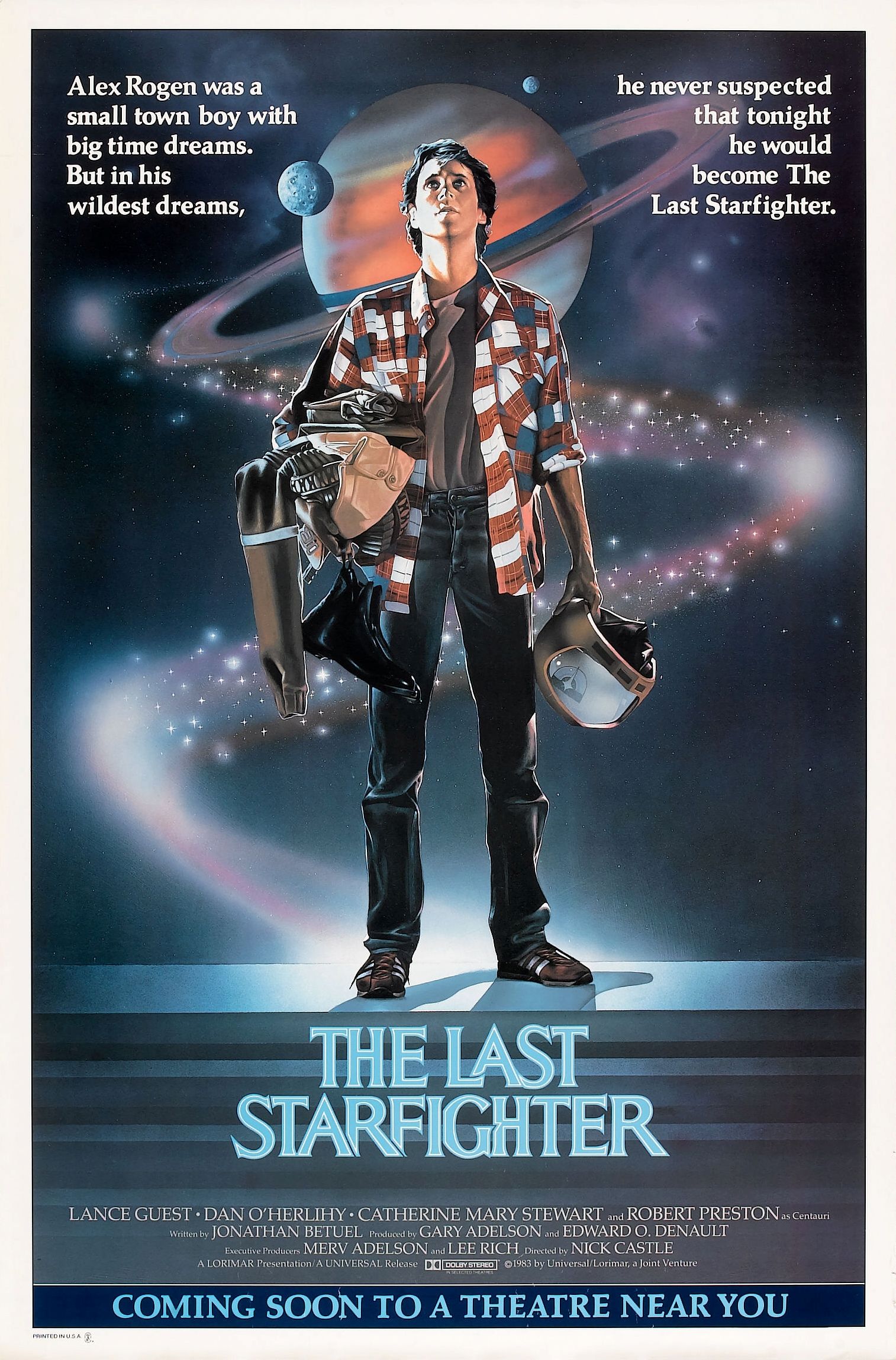
Title
Date
Description
Multiple Available
There are multiple entries on this date. You can modify the date range below to see them all.
The Last Starfighter
Established Date: July 13, 1984
- All
- production
- Digital Productions
- Apple
-
For the first time, highly detailed computer generated images were integrated with live action as realistic scene elements, rather than as monitor graphics or deliberately “CG” looking images. Gary Demos from the very begining always had the drive to only produce the highest resolution, highest quality imagery possible.
-
 CGM - Episode 08 - The Last Starfighter & 2010
CGM - Episode 08 - The Last Starfighter & 2010 -
For The Last StarFighter, practical explosion elements were licensed from John Dykstra’s company Apogee and were scanned into the computer. Code was written to pull mattes from the explosion elements (which were often shot against black), which were then applied to square polygons and placed into the 3D scene. Scripts to play the running footage on these “picture cards” (as Gary Demos called them) were written by Brad DeGraf.
picture cards -
 The Last Starfighter
The Last Starfighter -
Okay so I show up at this place and what do I find. Well, "The Last Starfighter" was in mid-production. Some guy was sitting in a trailer outside the main office, drawing storyboards faster than I could cover the paper even if I was allowed to just spill paint from a bucket. In another room is Ron Cobb, master of detail, carefully designing every last square inch of those spaceships. There was not one grommet on any of those ships …
Paul Isaacs story ... -
Kevin Rafferty(later at ILM) led the team that digitally encoded (modeled) many of the forms designed for the film by Ron Cobb. The technique used was to have top, front and side views of the model drawn orthographically on blueprint-like paper. A mouse/cursor (or ?puck?) with cross hairs would then be used to input the lines of the drawing, one point at a time. Details even included little 3D digital stunt actors inside the Gunstar?s cockpit.
modeling -
Beginning in Oct 83, Digital Productions traded in the “older” Cray-1S for the very first Cray X-MP supercomputer. The Cray was fronted by a VAX 11/780 and was used to produce nearly 300 shots totaling 25 minutes of screen time. The team used E&S PS400's for modeling and IMI vector motion systems for motion preview with Ramtek frame buffers for display. When Triple-I had wrapped the TRON work and decided not to continue in the CG film business, DP leased …
Cray -
 Digital Productions
Digital Productions -
 Larry Yaeger
Larry Yaeger
picture cards
For The Last StarFighter, practical explosion elements were licensed from John Dykstra’s company Apogee and were scanned into the computer. Code was written to pull mattes from the explosion elements (which were often shot against black), which were then applied to square polygons and placed into the 3D scene. Scripts to play the running footage on these “picture cards” (as Gary Demos called them) were written by Brad DeGraf.
Paul Isaacs story ...
Okay so I show up at this place and what do I find. Well, "The Last Starfighter" was in mid-production. Some guy was sitting in a trailer outside the main office, drawing storyboards faster than I could cover the paper even if I was allowed to just spill paint from a bucket. In another room is Ron Cobb, master of detail, carefully designing every last square inch of those spaceships. There was not one grommet on any of those ships that didn't have a purpose that Ron could describe. I remember one time I was animating the scene where Alex had just blown away the Rylon cargo ship, deep in the tunnels of the asteroid. The shot begins with the Gunstar facing away from the camera, pointed into the dead-end of the tunnel. Alex has just made his first real-life kill. The storyboard called for the Gunstar to "turn around sadly." So at this point I'm not exactly a seasoned animator, just a couple of semesters of hand-drawn fishes and some computer generated T-bone steaks under my belt. I show Ron the motion test for the sad, turning Gunstar, which is sort of slow and has a little kind of "Aw, shucks" kick to it. Ron's response was to turn to me, look me in the eye, and say very sweetly and kindly, "Well, Paul, I think maybe that's a little bit _too_ sad, don't you?"
modeling
Kevin Rafferty(later at ILM) led the team that digitally encoded (modeled) many of the forms designed for the film by Ron Cobb. The technique used was to have top, front and side views of the model drawn orthographically on blueprint-like paper. A mouse/cursor (or ?puck?) with cross hairs would then be used to input the lines of the drawing, one point at a time. Details even included little 3D digital stunt actors inside the Gunstar?s cockpit.
Cray
Beginning in Oct 83, Digital Productions traded in the “older” Cray-1S for the very first Cray X-MP supercomputer. The Cray was fronted by a VAX 11/780 and was used to produce nearly 300 shots totaling 25 minutes of screen time. The team used E&S PS400's for modeling and IMI vector motion systems for motion preview with Ramtek frame buffers for display. When Triple-I had wrapped the TRON work and decided not to continue in the CG film business, DP leased the Digital Film Printer (DFP) and hooked it up to on of the high speed channels of the Cray. The Cray driven DFP could scan 35mm film at four seconds a frame, and film out the 2000x2560 rendered images at twelve seconds a frame.
For the first time, highly detailed computer generated images were integrated with live action as realistic scene elements, rather than as monitor graphics or deliberately “CG” looking images. Gary Demos from the very begining always had the drive to only produce the highest resolution, highest quality imagery possible.
